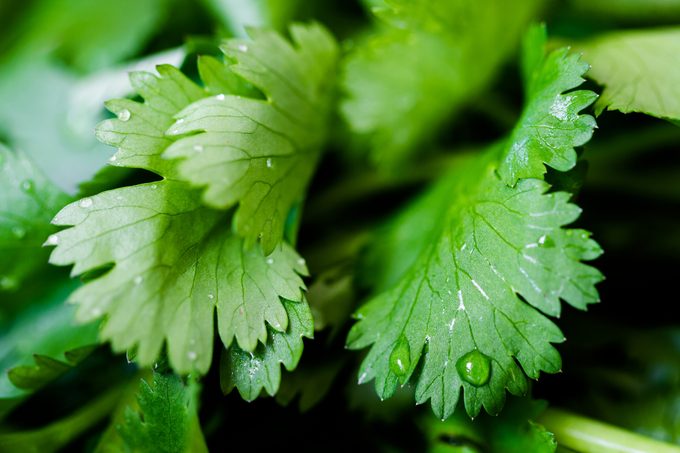Every summer, I strive to grow fresh cilantro so it’s ready to harvest when I have lots of ripe tomatoes and peppers. Then I make salsa. Cilantro doesn’t always cooperate because it grows better in cool weather.
But over the years, I’ve come up with a few strategies so I can include fresh cilantro in my first batch of homemade salsa, even in the hot summer.
If you’re someone who doesn’t like the taste of cilantro at all, that’s fine — it’s not for everyone. But you may still want to grow cilantro for the seeds, more popularly known as coriander, a lemony spice.
How To Plant Cilantro
Cilantro so loves cool weather you can start sowing seeds in the spring a few weeks before your frost-free date. Cilantro can be grown in the garden or in a container.
For the best chance of a continuous harvest, sow seeds in the fall every three to four weeks until a month or so before your usual first frost. If you garden where summers are hot, choose a variety that’s slow to flower, such as ‘Long Standing.’ Or you can skip sowing in peak summer and start up again as the days get cooler.
Sowing seeds in the garden
- Choose a well-drained, sunny location with compost-enriched soil. Cilantro does not transplant well so leave it where you started it.
- Plant seeds about 1/2-inch deep in rows. Space seeds 1/2- to one-inch apart.
Sowing seeds in a container
- Choose a container at least eight inches deep and wide, with a drainage hole in the bottom. Fill with a good potting soil mix.
- Sow seeds 1/2-inch deep and scatter throughout the container. Water well.
- Place the container in a sunny location. You can also keep smaller containers inside in a sunny window or use a grow light. Growing some cilantro indoors ensures a summer harvest.
How To Grow and Care for Cilantro

Watering
Cilantro grows quickly so keep it well-watered. If growing cilantro in a container, you may need to water it daily. In the garden, provide the equivalent of an inch of rain a week.
Weeding
Weeds compete with cilantro for soil nutrients, so remove weeds by pulling or lightly hoeing.
Fertilizing
Because cilantro grows quickly, additional fertilizer is not necessary in the garden. If growing in a container, start by adding a fertilizer labeled for growing vegetables to the soil mix.
Thinning
It isn’t necessary to thin cilantro seedlings. You’ll naturally do this as you harvest it.
Insects and diseases
Because cilantro grows quickly, insects and plant diseases are usually not a problem, with one exception — aphids. If you see aphids on your cilantro, wash them off with a strong spray of water.
As with most vegetables and herbs, growing them in different areas of the garden each year (AKA crop rotation) helps reduce pest problems.
How To Harvest Cilantro
Cut off cilantro leaves as they grow. Wash well and use within a few days.
Once a cilantro plant begins to flower, often three to four weeks after it germinates in the hot summer months, it will lose its taste. Pull out flowering plants and look to the next sowing for an additional harvest. Or let the cilantro flower and set seed, then harvest the seeds (coriander) when they turn brown.
To harvest the brown coriander seeds, cut off the flower stalks and shake them into a paper bag. The seeds will have a papery husk which can be rubbed off.
Common Uses for Cilantro
Cilantro is great in fresh salsa. That’s my favorite. It can also add flavor to plain rice and salad dressings, or serve as a garnish for tacos and many other Mexican dishes.
Article source here: How To Grow Cilantro


No comments:
Post a Comment